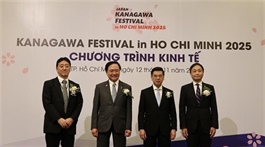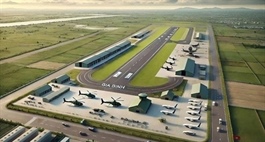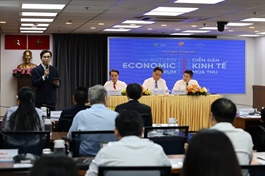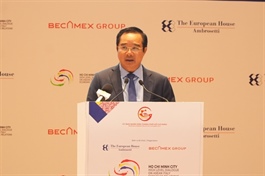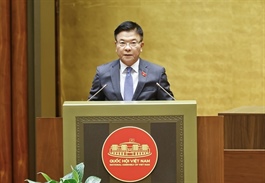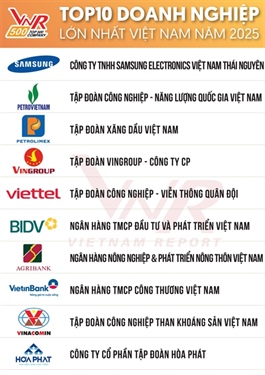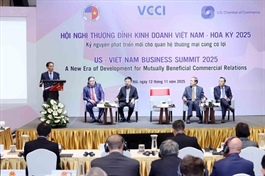Southeast Asia’s digital economy to surpass $300 billion in GMV in 2025
Southeast Asia’s digital economy to surpass $300 billion in GMV in 2025
With both gross merchandise value (GMV) and revenue seeing steady growth of 15 per cent on-year, Southeast Asia’s digital economy is set to surpass $300 billion this year, 1.5 times than the inaugural forecast made 10 years ago, according to an e-Conomy SEA report.
|
Google, Temasek, and Bain & Company on November 12 launched the 10th edition of the annual e-Conomy SEA report, "From Digital Decade to AI Reality: Accelerating the future in ASEAN". For the first time, the report has expanded its coverage from six markets to 10 Southeast Asian countries, adding Brunei, Cambodia, Laos, and Myanmar, to offer a more comprehensive view of the region's evolving digital economy.
The report points out that revenues are forecast to hit $135 billion as profitability accelerates across the region.
As the world's fifth largest economy with a population of over 680 million, Southeast Asia has endured a remarkable digital transformation over the past decade. The region's digital economy has shown resilience, leveraging successful monetisation strategies despite global headwinds such as COVID and inflation.
Key milestones over the decade include: 7.4x GMV and 11.2x revenue growth, $120 billion in private funding that has been invested, and the entry of over 200 million new internet users, rapidly adopting across sectors such as e-commerce and digital payments. Today, three in five people in the region shop online, and over 60% of all payments are digital.
E-commerce is picking up, with GMV and revenue projected to reach $185 billion and $41 billion respectively in 2025. This acceleration is driven by two key factors: the significant economics of scale of leading platforms, which create distinct competitive advantages, and the rapid expansion of video commerce. Video commerce accounts now for approximately 25 per cent of total GMV. This trend is fuelled by a high volume of lower-value transactions, the influence of trusted local creators, and seamless social-to-e-commerce integrations that convert user attention into sales with minimal friction.
In the food delivery field, most platforms are now profitable or are approaching that mark by building more sustainable business models. They have made significant progress in reducing their costs through optimised logistics and streamlined operations in key metro areas. Food delivery GMV is projected to reach $23 billion, with revenue approaching $2.4 billion in 2025. The segment is diversifying its earnings with advertising revenue that is surging 60-90 per cent on-year, as well as commissions from dine-in vouchers, loyalty subscriptions, and cloud kitchens.
Transport continues to grow by offering tiered services and subscription bundles, while in-app ads provide an additional revenue stream. Projections show GMV reaching $11.5 billion and revenue climbing to $1.9 billion in 2025
Online travel continues to grow, with GMV projected to hit $51 billion and revenue set to reach $24 billion in 2025, fuelled by high airfares and accommodation rates. Indonesia, Malaysia, and Vietnam have boosted arrivals from China and India by expanding visa-free or e-visa schemes, recording double-digit growth in total arrivals in the first half of 2025. Meanwhile, Japan is solidifying its status as a top destination for Southeast Asian travellers, while China is rapidly gaining ground.
Online media is on track to hit $34 billion in GMV in 2025. Advertising growth (16 per cent on-year) is fuelled by the rise of retail media networks, and the increasing maturity of video commerce and AI-powered ad formats. Gaming (6 per cent) continues to expand its user base, especially in Indonesia. Growth of the video (15 per cent) and music (14 per cent) segments continues, but slowing down from their 2024 peaks.
Digital financial services (DFS) are quickly maturing beyond payments. Financial inclusion is expanding through embedded lending solutions targeting underserved segments and greater regional connectivity and adoption. Ten Southeast Asian countries are now using national unified QR systems, and eight countries have enabled cross-border QR interoperability. DFS growth is fuelled by digital lending, where ecosystem players leverage in-app data for underwriting, and a surging digital wealth segment, where several platforms now exceed $1 billion in assets under management for six Southeast Asian markets.
Southeast Asia is rapidly positioning itself at the forefront of the global AI transformation, driven by a thriving ecosystem of adopters, innovative startups, and major investors. This transformation is already part of everyday life in the region, with consumer interest in AI topics three times higher than the global average. Singapore, Brunei, Philippines, Indonesia, and Malaysia already rank among the world's top 20 for interest in multimodal AI. Three out of four users say AI-powered tools have helped them discover content and make tasks easier, while nearly half (45 per cent) expect to save time on research and make decisions faster.
The region's workforce is seizing the AI opportunity and actively developing their skills. 79 per cent of workers said they have learned to use AI, and 43 per cent reported using it both personally and professionally.
With over 4,600 MW new capacity planned, the region's data centre capacity is set to grow by 180 per cent, faster than the 120 per cent growth projected for the rest of Asia-Pacific.
AI is a bright spot for investors in Southeast Asia. Over the past twelve months, more than $2.3 billion has been invested in the region's over 680 AI startups, accounting for over 30 per cent of private funding value in the first half of 2025. This momentum is further fuelled by major global players choosing the region as a new hotspot for cloud and data centre investments.
"Surpassing the $300 billion GMV milestone in 2025, 1.5x our ambitious forecast from a decade ago, firmly validates that Southeast Asia's potential is even greater than we imagined. Backed by strong fundamentals, robust macroeconomic conditions, and new consumer behaviour, the transformative impact of AI and the shift towards sustainable economics are clear. The future here will be defined by speed as the region harnesses its proven ability to seize the returns of this new age not in years, but in months. We remain deeply committed to partnering with Southeast Asia as it accelerates towards its next ambition: becoming a thriving intelligent economy,” said Sapna Chadha, vice president for Southeast Asia and South Asia Frontier at Google.
"Southeast Asia's digital economy has shown extraordinary growth and remarkable resilience, sustaining momentum despite periods of investor caution and a shifting macroeconomic landscape over the last decade. With GMV on track to surpass $300 billion in 2025, the region's "digital decade" has built a strong foundation to chart the next phase of value creation. The real opportunity now lies in how businesses harness AI as a catalyst for impact while balancing the region's structural realities. As markets consolidate and investor confidence returns, the next wave of growth will be more focused, efficient, and innovation-led,” said Florian Hoppe, partner at Bain & Company.
- 07:00 13/11/2025




